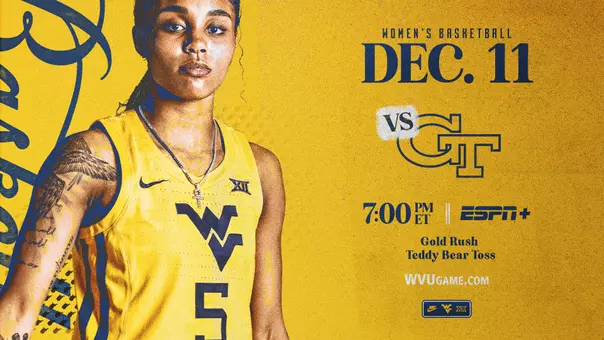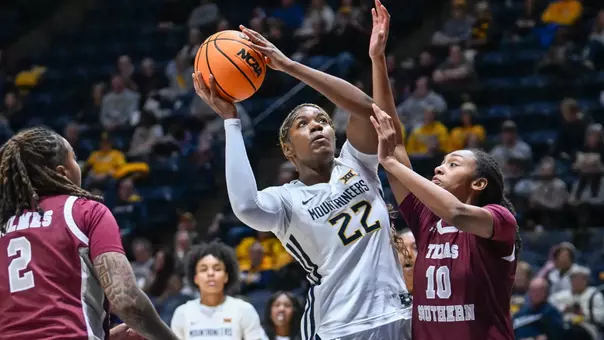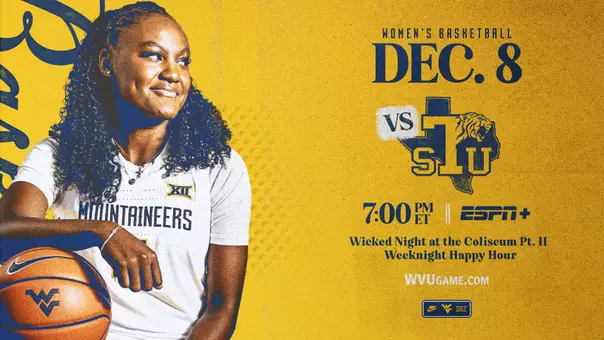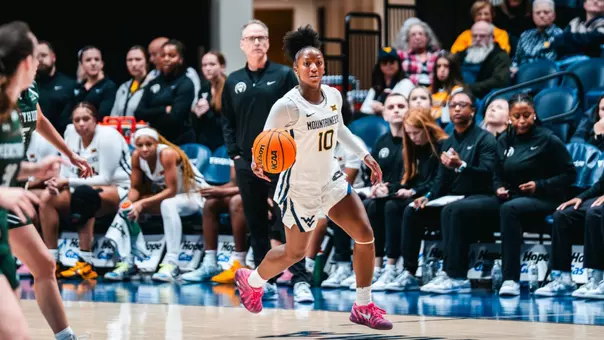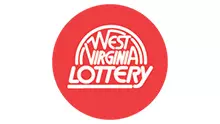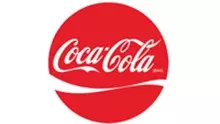Photo by: WVU Athletic Communications
WVU’s Plitzuweit Blends Old and New Styles
October 03, 2022 04:57 PM | Women's Basketball, Blog
MORGANTOWN, W.Va. – It took about 10 minutes of listening to Dawn Plitzuweit talk basketball this morning to realize that our hard-core, dyed-in-the-wool Mountaineer fans are going to recognize and really enjoy many of the concepts that are near and dear to her heart.
Spacing, offensive efficiency, player versatility, making the proper reads and not having just one primary ball handler were some of the things she mentioned today. We used to hear some of the same things come out of John Beilein's mouth whenever he described his motion offense.
Actually, motion offense has been a big part of West Virginia's basketball heritage going back to the late 1940s with Lee Patton, into the 1950s with Fred Schaus and continuing into the 1960s with George King. Today, Bob Huggins has his version of the motion offense on the other side of the Basketball Practice Facility.
But getting back to King, he never had any set plays, according to Rod Thorn, but rather five players reading each other and playing off those reads. The ball moved until an area opened to be exploited, the key being the ball was never stuck in one place; it was always moving.
"In our motion offense, it's not as if we're trying to drive into one area," Plitzuweit explained. "It's not like we set up our offense so we can drive middle, or we set up our offense so we can drive baseline or drive down the rails. Our offense is set up to where you can get those type of drives within any possession, but we don't even know when that's going to happen because it depends upon the actions of the other players.
"Slowing down and reading … 'this isn't my gap right now even though last possession I got a great middle drive …' The middle is plugged up, so the option is to drive to the baseline. The key is understanding when to do what," she continued. "When should they back cut? When should they pop? When should they curl? When should they screen versus someone else screening for them? All those things take a little bit of time."
Again, these are concepts we readily recall from Beilein's days here. Interestingly enough, Plitzuweit got an opportunity to watch some of Beilein's practices when the two were together at Michigan.
And she was clearly paying attention, even if she couldn't figure out some of the unusual things he'd say during practice, or some of the oddball plays he'd call out such as "double quickie potato" or the "greatest play ever." Despite his sometimes-confusing vernacular, the methodology of teaching was brilliantly simple.
"I do think there are a lot of similarities in terms of how we break things down and we teach and how we simplify things," she admitted. "We don't use his exact terminology, but it was interesting watching his practices. He would tell his guys, not exactly, but 'we're going to play hockey and after hockey we're playing baseball and then the quarterback is going to throw it.' I'm thinking, what is he talking about?
"But his guys knew exactly what it meant," she said. "Baseball meant this, and hockey meant this, and it was simplified for his players. We have tried to do that to the best of our ability so that they can understand.
"The bottom line is, if we have great spacing offensively, then we get some movement that's hard to guard, and we have players who can score from different ways; we're not doing really anything that's complicated," she said. "We're just trying to play basic, simple, fundamental basketball and make reads. That can be really challenging to guard."
On several different occasions this morning, Plitzuweit referenced her system – something Beilein used to do constantly.
"The better the athlete, the higher the basketball IQ, the easier it is to run our system," he would say, or "The better the players, the better our system works."
Beilein was protective of his system, and it would irritate him whenever people compared it to Pete Carril's old Princeton offense or to Tex Winters' Triangle Offense. He said the roots of what he did originated from the two-guard offense that he developed at LeMoyne College aimed at freeing up shooters on drives and kicks, or back-door cuts to the basket.
"If the Princeton is Japanese, we're Chinese and the Triangle might be Korean," Beilein once said. "They may not be the same languages, but there's similar phonics there."
Along those lines, Plitzuweit's motion system is probably Vietnamese then.
One other notable aspect of her system that will become familiar to older Mountaineer fans is her willingness to use early offense.
Gale Catlett used to have great success with early offense during his days at WVU in the 1980s and 1990s. His reasoning was simple - it's a helluva lot easier to score four-on-three or three-on-two in the open court than it is five-on-five when the defense is set.
"The first thing I was taught in college from Fred Schaus was to get the ball off the backboard and get down on the fast break and get the numbers," Catlett once explained. "You get the easiest shots you can ever get if you get the numbers on the break, so what we tried to get was two-on-one or three-on-two. All the good coaches I was ever around did this."
Plitzuweit admitted today that her idea for early offense came from studying the Dayton men's and women's teams, both of whom were using a version of it popularized by the Phoenix Suns.
"We actually started implementing it when I was at Northern Kentucky, but we couldn't call it 'Phoenix' because in our league we had the Green Bay Fighting Phoenix," she laughed. "We had a different name for it and now it's just our early offense or attack mode.
"We're not very far into it, and we really haven't done it as much against defenses as we'd like, but at the same time, everybody wants to play fast and have some fun doing that. And we have some speed, so why not?"
Why not?
There are a lot of good, sound concepts that you will be seeing from Plitzuweit's team this year - things that have been really successful in some manner or form here in the past.
Only now, it will be her twist on things.
West Virginia is three official practices into its preseason ahead of its 2022-23 opener against USC Upstate on Thursday, Nov. 10, at the WVU Coliseum. Season tickets are currently on sale and can be purchased by logging on to WVUGAME.com.
Spacing, offensive efficiency, player versatility, making the proper reads and not having just one primary ball handler were some of the things she mentioned today. We used to hear some of the same things come out of John Beilein's mouth whenever he described his motion offense.
Actually, motion offense has been a big part of West Virginia's basketball heritage going back to the late 1940s with Lee Patton, into the 1950s with Fred Schaus and continuing into the 1960s with George King. Today, Bob Huggins has his version of the motion offense on the other side of the Basketball Practice Facility.
But getting back to King, he never had any set plays, according to Rod Thorn, but rather five players reading each other and playing off those reads. The ball moved until an area opened to be exploited, the key being the ball was never stuck in one place; it was always moving.
"In our motion offense, it's not as if we're trying to drive into one area," Plitzuweit explained. "It's not like we set up our offense so we can drive middle, or we set up our offense so we can drive baseline or drive down the rails. Our offense is set up to where you can get those type of drives within any possession, but we don't even know when that's going to happen because it depends upon the actions of the other players.
"Slowing down and reading … 'this isn't my gap right now even though last possession I got a great middle drive …' The middle is plugged up, so the option is to drive to the baseline. The key is understanding when to do what," she continued. "When should they back cut? When should they pop? When should they curl? When should they screen versus someone else screening for them? All those things take a little bit of time."
Again, these are concepts we readily recall from Beilein's days here. Interestingly enough, Plitzuweit got an opportunity to watch some of Beilein's practices when the two were together at Michigan.
And she was clearly paying attention, even if she couldn't figure out some of the unusual things he'd say during practice, or some of the oddball plays he'd call out such as "double quickie potato" or the "greatest play ever." Despite his sometimes-confusing vernacular, the methodology of teaching was brilliantly simple.
"I do think there are a lot of similarities in terms of how we break things down and we teach and how we simplify things," she admitted. "We don't use his exact terminology, but it was interesting watching his practices. He would tell his guys, not exactly, but 'we're going to play hockey and after hockey we're playing baseball and then the quarterback is going to throw it.' I'm thinking, what is he talking about?
"But his guys knew exactly what it meant," she said. "Baseball meant this, and hockey meant this, and it was simplified for his players. We have tried to do that to the best of our ability so that they can understand.
"The bottom line is, if we have great spacing offensively, then we get some movement that's hard to guard, and we have players who can score from different ways; we're not doing really anything that's complicated," she said. "We're just trying to play basic, simple, fundamental basketball and make reads. That can be really challenging to guard."
On several different occasions this morning, Plitzuweit referenced her system – something Beilein used to do constantly.
"The better the athlete, the higher the basketball IQ, the easier it is to run our system," he would say, or "The better the players, the better our system works."
Beilein was protective of his system, and it would irritate him whenever people compared it to Pete Carril's old Princeton offense or to Tex Winters' Triangle Offense. He said the roots of what he did originated from the two-guard offense that he developed at LeMoyne College aimed at freeing up shooters on drives and kicks, or back-door cuts to the basket.
"If the Princeton is Japanese, we're Chinese and the Triangle might be Korean," Beilein once said. "They may not be the same languages, but there's similar phonics there."
Along those lines, Plitzuweit's motion system is probably Vietnamese then.
One other notable aspect of her system that will become familiar to older Mountaineer fans is her willingness to use early offense.
Gale Catlett used to have great success with early offense during his days at WVU in the 1980s and 1990s. His reasoning was simple - it's a helluva lot easier to score four-on-three or three-on-two in the open court than it is five-on-five when the defense is set.
"The first thing I was taught in college from Fred Schaus was to get the ball off the backboard and get down on the fast break and get the numbers," Catlett once explained. "You get the easiest shots you can ever get if you get the numbers on the break, so what we tried to get was two-on-one or three-on-two. All the good coaches I was ever around did this."
Plitzuweit admitted today that her idea for early offense came from studying the Dayton men's and women's teams, both of whom were using a version of it popularized by the Phoenix Suns.
"We actually started implementing it when I was at Northern Kentucky, but we couldn't call it 'Phoenix' because in our league we had the Green Bay Fighting Phoenix," she laughed. "We had a different name for it and now it's just our early offense or attack mode.
"We're not very far into it, and we really haven't done it as much against defenses as we'd like, but at the same time, everybody wants to play fast and have some fun doing that. And we have some speed, so why not?"
Why not?
There are a lot of good, sound concepts that you will be seeing from Plitzuweit's team this year - things that have been really successful in some manner or form here in the past.
Only now, it will be her twist on things.
West Virginia is three official practices into its preseason ahead of its 2022-23 opener against USC Upstate on Thursday, Nov. 10, at the WVU Coliseum. Season tickets are currently on sale and can be purchased by logging on to WVUGAME.com.
Postgame Press Conference | Texas Southern
Monday, December 08
Mark Kellogg | Mercyhurst
Friday, December 05
Sydney Shaw & Carter McCray | Mercyhurst
Friday, December 05
Mark Kellogg | Villanova
Monday, December 01
